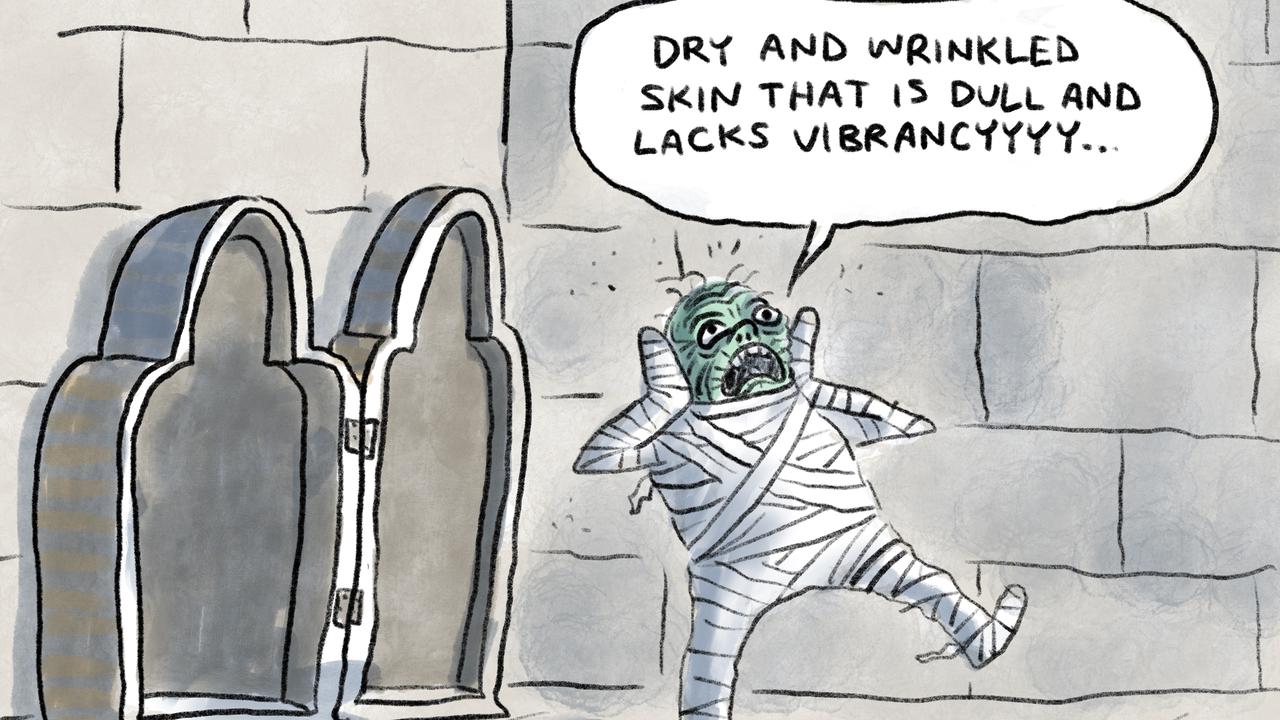Gerard Henderson has written a fascinating new biography of BA Santamaria that is published this week. Santamaria was the founder and leader of the National Civic Council until his death in 1998. He was the spiritual founder of the Democratic Labor Party, the anti-communist group that split from the Labor Party in the mid-1950s.
Santamaria was also famous for his weekly Point of View television broadcasts and the column he wrote for The Australian.
Henderson’s detailed and very readable biography adds a great deal of new information about Santa and the internal workings of the NCC. Yet the NCC, separate from Santa himself, has mostly been erased from history. It was partly to colour in some of the whited out aspects of our political history that I wrote the chapters about the NCC in my memoir published this week, When We Were Young and Foolish.
A slightly bizarre convention has grown up in much Australian commentary that seems to invert history, morality and common sense. This inversion is that if you are a former communist who has become a little less radical, you are celebrated as someone whose youthful idealism was perhaps a little excessive but who was always working heroically for the underdog. If, on the other hand, you were identified as an anti-communist, you are suspected of likely having been obsessive, a fantasist, nasty, somehow undemocratic and a little bit crook.
But consider the record of Australian communists and anti-communists. Australian communists strongly supported the Hitler-Stalin pact at the start of World War II and actively campaigned against Australia’s involvement in the war until Germany attacked the Soviet Union. In other words, Australian communists thought it was wrong to fight Adolf Hitler until Hitler became an enemy of the Soviet Union.
Australian communists routinely rigged union ballots, as was definitively established in the court cases around Laurie Short’s anti-communist victories in the ironworkers union in the 50s. Australian communists practised systematic violence as a tool in politics, as union and university campaigns demonstrated.
Australian communists actively supported the Khmer Rouge in Cambodia, and in the years of the Khmer Rouge genocide many denied that it was happening. They actively supported Soviet and Chinese communism when these governments oversaw the violent deaths of tens of millions of people. Australian communists received tens, probably hundreds, of thousands of dollars from the Soviet and other foreign governments.
In the US and France many former communists and their sympathisers, who remained on the centre-left of politics, came to grips with the enormity of the moral mistake they had made in supporting communism. This did not happen much in Australia. Our sense of history is the poorer as a result. The NCC was for a time the most dedicated and effective anti-communist organisation in Australia. It did not receive money from foreign governments, it did not break any laws, it did not practise violence.
Its social policy was never much more exotic than favouring large-scale immigration and wanting tax benefits for single-income families, child endowment payments and state aid for non-government schools. The DLP was the first political party to oppose the White Australia policy.
The NCC has been whited out of history because of a number of peculiar factors. After thousands of anti-communists left or were expelled from the ALP in the mid-50s, Labor proscribed the NCC, a proscription I believe is in force even today. That meant any ALP member who was suspected of being a member of the NCC, or even of co-operating with it, was liable to be expelled. This happened to Brian Harradine, who became an independent senator in Tasmania, and to others.
However, in 1983, Bob Hawke brought the four big NCC-controlled or influenced unions back into the Labor Party. This is one of the reasons we have a much more sensible ALP than otherwise might be the case. However, because of proscription against the NCC and the conflicts of the past, the men and women who went back into Labor understandably downplayed their NCC backgrounds. This also suited the right-wing Labor people who all along had co-operated closely with the NCC, often in secret.
The odd result is dreadful gaps in the historical record. Giant figures of Australian unionism, such as Jim Maher of the shop assistants union and Mike O’Sullivan of the clerks union, commanded mainstream media obituaries on their deaths. But these obituaries, written by their friends, played down or didn’t mention the central political affiliation and commitment of their lives.
Because the extreme Left is so effective at, and dedicated to, long-term vilification and demonisation of its enemies, many NCC alumni, even beyond the world of unions, also have found it convenient to play down their old NCC associations. This is true of some folks who practise the law and like to take cases from both sides of politics, and would likely suffer some commercial disadvantage if they were seen as NCC types. But it is true of others, too, who simply don’t want to have to go through the business of explaining that there never was a clerical fascist organisation in Australia, they never carried out sinister Vatican plots and, no, they were never enemies of democracy.
The NCC of today does interesting work but is not the power it once was. Since an internal split in the 80s it has not really had any trade union influence at all.
Santamaria is often thought of as a failure because he didn’t realise his social vision for Australia. But probably 30,000 people or more went through his movement one way or another. The list of NCC alumni includes Tony Abbott, the head of the Sydney Institute and countless other luminaries. Its long-term institutional consequences are substantial. This was certainly less than total success, but much, much more than failure.




To join the conversation, please log in. Don't have an account? Register
Join the conversation, you are commenting as Logout